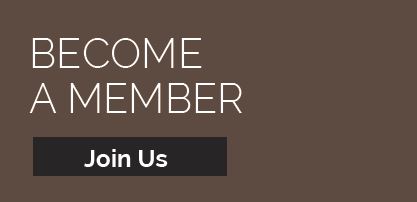Reflections on the UN Human Rights Committee’s Review of Canada’s Compliance with the ICCPR
By Lara Koerner Yeo
In early July, for the first time in ten years, the Human Rights Committee (the “Committee”) reviewed Canada’s compliance with the International Covenant on Civil and Political Rights (the “ICCPR”).
The Committee’s observations released on July 23rd, serve as the only United Nations treaty body review of the 2006-2015 period.[1] Leading into the election season, the observations are timely and constitute an important indication of key human rights issues that warrant domestic action.
The Committee discussed Canada’s reluctance to comply with the interim measures of the Committee under the First Optional Protocol to the ICCPR (the “OP-ICCPR”). In response to the Committee’s questions, the Canadian delegation advised that interim measures are not binding.[2] The delegation took the position that while Canada would consider the Committee’s interim measures, it cannot always agree with them, in which case it will not act on them.[3]
Canada’s response runs counter to General Comment 33 of the Committee (“GC33”). GC33 outlines that a State’s failure to comply with interim measures is incompatible with a State’s obligation to respect and act in good faith in the individual communication procedure under the Optional Protocol.[4] In short, if a State does not comply with Committee interim measures, the State is engaging in the Optional Protocol procedure in bad faith.
While Canada has a record of acceding to interim measures, in recent years this has changed. In 2011, for example, the Committee submitted an interim measure request to Canada that was not followed.[5] Canada claimed that there was no obligation to accede to the request because federal government officials received it after the claimant had been deported.[6] The Committee, in its response, noted that just as Canada has the capacity to deport individuals, so too does it have the capacity to return the deported.[7] It found that deporting the claimant had violated his Article 7 rights under the ICCPR.[8] Canada has yet to arrange for the claimant’s return.[9] There are other cases in the last two years where Canada has not acceded to interim measure requests by the Committee and the Committee against Torture.[10] In one instance, a claimant is now in hiding in Canada after the State took action to deport him irrespective of a Committee interim measure request that he not be deported.[11]
This lack of respect for interim measures indicates that, at least since 2011, Canada has engaged with the Committee in bad faith. The Committee’s observations urge Canada to “reconsider its position in relation to Views and Interim measures,” thereby complying with GC33.[12]
General Comment No. 31 (“GC31”) sets out a guiding principle and paradigm underpinning the Committee’s periodic reviews of States’ compliance with the ICCPR. The Comment clarifies that States must act in good faith when giving effect to the ICCPR.[13] It also articulates that States party to the ICCPR are under a general obligation to ensure the civil and political rights of all individuals in a State’s territory and subject to its jurisdiction.[14] Thus, complying with the ICCPR requires States to create a mechanism to monitor domestic implementation of human rights law, as well as realize a process of state response to and compliance with the recommendations and interim measures of UN treaty bodies.
There is no effective accountability mechanism to ensure that Canada complies with its international human rights obligations. While the issue of implementation was not specifically picked up by the Committee in its most current observations, numerous civil society groups recognize that implementation continues to be an overarching concern.[15] Canada’s failure to implement a transparent, accountable implementation mechanism suggests a lack of respect for international human rights law and an unwillingness to improve compliance with the law and UN treaty body recommendations.
Many of the issues the Committee highlighted as principal matters of concern are recent developments in Canada, including the crackdown on civil society dissent and evidence-based human rights advocacy.[16] The Committee also took issue with Bill C-51 and the enhanced powers of the Canadian Security Intelligence Service, failures to regulate Canadian mining companies operating abroad, excessive use of police force, insufficient independent accountability mechanisms to investigate allegations of police misconduct, indefinite detention of irregular migrants, and cuts to health care for irregular migrants and refugees.[17]
Other issues recognized by the Committee are longstanding and attributed in great part to Canada’s history of colonial displacement of Indigenous peoples and the expropriation of their lands. In fact, two of the three priority issue areas Canada is asked to report on within a year centre on Indigenous peoples, namely, the murders and disappearances of Indigenous women and girls as well as Indigenous lands and titles.[18]
In the review meetings, Canada received multiple questions about its response to missing and murdered Indigenous women and girls. The government responded by referring to the 2014 and 2015 RCMP Operational Overview reports on the subject, emphasizing the rate of violence perpetrated by Indigenous men against Indigenous women, as well as the number of Indigenous women who were intoxicated at their time of death.[19] The RCMP data is not comprehensive and the government’s choice of statistics downplays its legal responsibility, focusing instead on the tired game of victim- and Indigenous community-blaming.[20]
The Committee recommends Canada conduct a national inquiry, adding its voice to other UN actors, including the Special Rapporteur on the Rights of Indigenous Peoples and the Committee on the Elimination of Discrimination against Women (“CEDAW”).[21] In a March 2015 report on the murders and disappearances, CEDAW found Canada to be in violation of the Convention on the Elimination of All Forms of Discrimination against Women, including Articles 2, 3, 5 and 14.[22] Canada was last reviewed by CEDAW in 2008 and has an upcoming review in late 2016.
In response to a Committee question about on-going sex discrimination in the Indian Act,[23] the government replied that it was committed to an “incremental approach” to reform and, without noting a specific name or title, referenced a government special rapporteur as evidence of ongoing state action.[24]
There are fundamental problems with the government’s response in this regard. Firstly, as Sharon McIvor, who launched the first case to be decided in Court on this matter, McIvor v Canada,[25] eloquently stated in her remarks to the Committee:
There are many things that Canada should consult Aboriginal communities about. Continued Indian Act sex discrimination is not one of them. The right to be free from legislated discrimination by Canada is a non-negotiable right of Aboriginal women.[26]
By accepting an incremental approach, there is no guarantee when, if ever, legislated sex-discrimination will be eradicated from the Act. Canada’s response to this issue is antithetical to its domestic and international gender equality obligations. The use of an incremental approach as justification to the Committee is an embarrassment.
Secondly, the special rapporteur referenced by the government is Douglas Eyford, Ministerial Special Representative on Renewing the Comprehensive Land Claims Policy. Eyford’s rapporteur work and report focus is on the Comprehensive Land Claims Policy, not sex-discrimination in the Act.[27] In sum, the government’s “special rapporteur” seems not to exist.
The Committee’s observations reflect Canada’s recent failures to comply with its international human rights obligations. As affirmed by civil society, Canada has the resources, the human and financial capital to respect and implement international human rights.[28] Now all that remains is for Canada to comply.
Lara Koerner Yeo is a JD Candidate at the Univeristy of Toronto Faculty of Law. She is a Steering Committee Member of the Canadian Feminist Alliance for International Action and attended the Human Rights Committee review of Canada in July.
[1] Human Rights Committee, “Concluding observations on the sixth periodic report of Canada,” UN Doc CCPR/C/CAN/CO/6, 23 June 2015, online at: OHCHR <http://tbinternet.ohchr.org/_layouts/treatybodyexternal/Download.aspx?symbolno=CCPR%2fC%2fCAN%2fCO%2f6&Lang=en>.
[2] Author’s personal notes from the Committee during its 114th session, 3176th meeting, 7 July 2015.
[3] Ibid; Human Rights Committee, “Consideration of reports submitted by States parties under article 40 of the Covenant Sixth periodic reports of States parties due in October 2010 Canada,” UN Doc CCPR/C/CAN/6, 23 October 2013, at para 9, online: OHCHR <http://tbinternet.ohchr.org/_layouts/treatybodyexternal/Download.aspx?symbolno=CCPR%2fC%2fCAN%2f6&Lang=en>.
[4] Human Rights Committee, General Comment No. 33: The Obligations of States Parties under the Optional Protocol to the International Covenant on Civil and Political Rights, UN Doc CCPR/C/GC/33, 5 November 2008, see para 19, online: OHCHR <http://tbinternet.ohchr.org/_layouts/treatybodyexternal/Download.aspx?symbolno=CCPR%2fC%2fGC%2f33&Lang=en> (the OP-ICCPR allows individuals to submit complaints to the Committee alleging violations of their rights set out in the ICCPR; upon receipt of a complaint, the Committee follows the individual communication procedure provided for in the OP-ICCPR).
[5] Human Rights Committee, Communication No. 2091/2011, Views adopted by the Committee at its 113th session (16 March-2 April 2015), UN Doc CCPR/C/113/D/2091/2011, 5 June 2015, online: OHCHR <http://www.ohchr.org/EN/HRBodies/CCPR/Pages/Jurisprudence.aspx>.
[6] Ibid at para 9 (the federal government received the request in Ottawa 11 minutes after the claimant had been deported).
[7] Ibid.
[8] Ibid at para 11.
[9] Supra note 2.
[10] Email correspondence with Stewart Istvanffy (July-August 2015), counsel on individual complaints brought before UN treaty bodies.
[11] Ibid; UNHR Committee, Communication No. 2284/2013 (a decision in this case is expected in October 2015).
[12] Supra note 1 at para 5.
[13] Human Rights Committee, General Comment No. 31: The Nature of the General Legal Obligation Imposed on States Parties to the Covenant, UN Doc CCPR/C/21/Rev.1/Add.13, 26 May 2004, at para 3, online: OHCHR <http://tbinternet.ohchr.org/_layouts/treatybodyexternal/Download.aspx?symbolno=CCPR%2fC%2f21%2fRev.1%2fAdd.13&Lang=en>.
[14] Ibid.
[15] The issue of implementation features in civil society submissions to the Human Rights Committee, see in particular the 5 June 2015 Amnesty International submission to the Committee, available at http://tbinternet.ohchr.org/_layouts/treatybodyexternal/SessionDetails1.aspx?SessionID=899&Lang=en.
[16] Supra note 1 at para 15 (also see the Voices-Voix Dismantling Democracy report, available at http://voices-voix.ca/en/document/dismantling-democracy-stifling-debate-and-dissent-canada; Committee Member, Sir Nigel Rodley, referenced this report in his comments during the Committee’s 114th session, 3177th meeting, 8 July 2015).
[17] Ibid at paras 6, 10, 11, 12.
[18] Ibid at para 21.
[19] Supra note 2.
[20] Women’s Legal Education and Action Fund, Press Release, “Legal Strategy Coalition on Violence against Indigenous Women releases key concerns with RCMP “Missing and Murdered Aboriginal Women: 2015 Update” (29 July 2015), online: LEAF <http://www.leaf.ca/legal-strategy-coalition-on-violence-against-indigenous-women-releases-key-concerns-with-rcmp-missing-and-murdered-aboriginal-women-2015-update/> (see issue 3 “Limited data set masks RCMP failures and continues to cloud the facts”).
[21] Supra note 1 at para 9 (also see OHCHR, Special Rapporteur on the Rights of Indigenous Peoples, James Anaya, The situation of indigenous peoples in Canada, UN Doc A/HRC/27/52/Add.2, 4 July 2014, at para 89, online: <http://unsr.jamesanaya.org/country-reports/the-situation-of-indigenous-peoples-in-canada>).
[22] Committee on the Elimination of Discrimination against Women, Report of the inquiry concerning Canada of the Committee on the Elimination of Discrimination against Women under article 8 of the Optional Protocol to the Convention on the Elimination of All Forms of Discrimination, UN Doc CEDAW/C/OP.8/CAN/1, 6 March 2015, at para 215, online: OHCHR <http://www.ohchr.org/en/newsevents/pages/displaynews.aspx?newsid=15656&langid=e>.
[23] Indian Act, RSC 1985, c I-5 (the “Act”).
[24] Author’s personal notes from the Committee during its 114th session, 3177th meeting, 8 July 2015.
[25] 2009 BCCA 153, 91 BCLR (4th) 1 (also see Aboriginal Affairs and Northern Canada, “Gender Equity in Indian Registration Act”, 2013, online: AADNC <https://www.aadnc-aandc.gc.ca/eng/1308068336912/1308068535844>).
[26] Canadian Feminist Alliance for International Action, News Release, “Sharon McIvor delivers FAFIA Statement in the UN Human Rights Committee July 6, 2015” (7 July 2015), online: FAFIA <http://fafia-afai.org/en/sharon-mcivor-delivers-fafia-statement-in-the-un-human-rights-committee-july-6-2015/> (also see Sharon McIvor’s petition on the on-going legislated sex-discrimination, currently pending with the UN Human Rights Committee, Communication No. 2020/2010, online: PHRC <http://povertyandhumanrights.org/wp-content/uploads/2011/08/Mcivor-v.-Canada-Petitioner-Comments-December-5-2011.pdf>).
[27] See Aboriginal Affairs and Northern Development Canada, “Renewing the Federal Comprehensive Land Claims Policy” (2 April 2015), online: AANDC <http://www.aadnc-aandc.gc.ca/eng/1405693409911/1405693617207>.
[28] Ad hoc Coalition of Canadian and International NGOs, News Release, “Canada must take action on the United Nations Human Rights Committee’s Concluding Observations released today” (23 July 2015), online: Market Wired <http://www.marketwired.com/press-release/-2041376.htm>.




